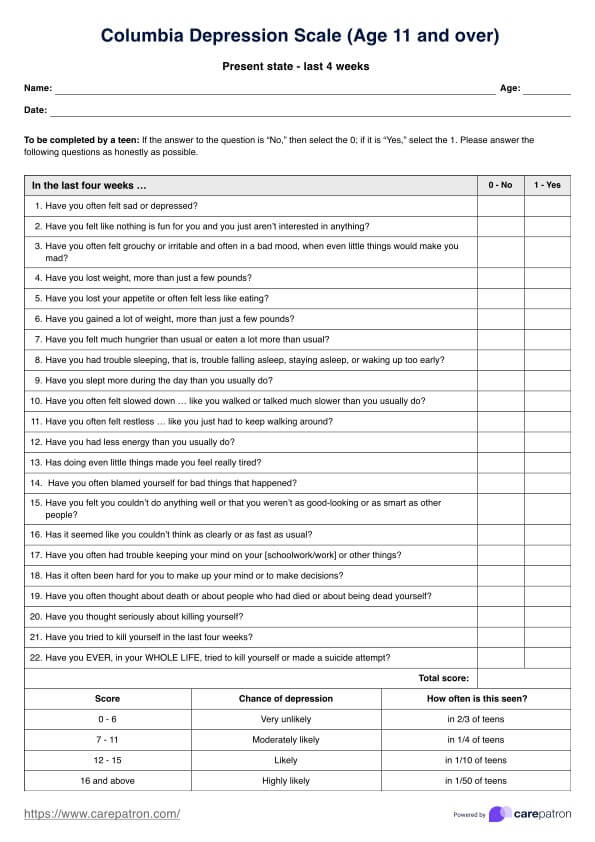The Columbia Depression Scale (CDS) is a highly accurate and reliable screening tool for identifying potential depression in adolescents aged 11 and older. Research has demonstrated that the CDS has strong psychometric properties, good sensitivity and specificity, and is effective in diverse populations.

Columbia Depression Scale
A guide for mental health professionals on the Columbia Depression Scale (CDS), covering its application, scoring, and interpretation to enhance patient care.
Use Template
Columbia Depression Scale Template
Commonly asked questions
The CDS is specifically designed for adolescents aged 11 and over. For adults, other depression assessment tools like the Beck Depression Inventory or patient health questionnaire (PHQ-9) may be more appropriate.
The frequency of administration depends on the clinical setting and the patient's needs. It can be used periodically to monitor changes in depressive symptoms over time.
EHR and practice management software
Get started for free
*No credit card required
Free
$0/usd
Unlimited clients
Telehealth
1GB of storage
Client portal text
Automated billing and online payments











